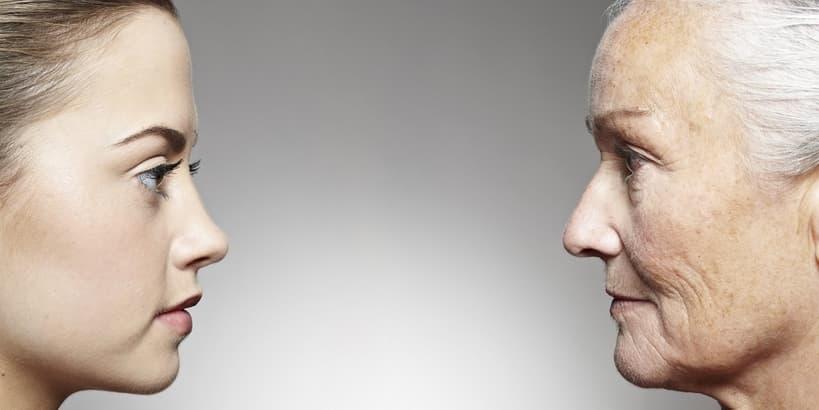Bad habits like smoking and tanning can harm the skin and create wrinkles in a person’s skin that is only 20 or 30 years old. A person’s mid 40’s is usually the time wrinkles and fine lines begin to appear, but some people do not develop wrinkles until their 60’s. Eating a healthy diet and taking care of your skin can prolong the aging process, but skin that ages from chemical changes cannot be prevented.
The top, middle and bottom layers of your skin are respectively called the epidermis, dermis and subcutaneous tissues. Your epidermis, or top layer, shows the wrinkles, deep lines, age spots and indentations. The secondary dermis layer holds your collagen (what strengthens your skin), proteins, and elastin (what gives your skin its elasticity). The subcutaneous tissues make up your third layer and are partially composed of fatty deposits. All of these layers make contributions to the aging process of your skin.
As you age, sebum glands produce less sebum (which keeps your skin soft and smooth), and this dries out your epidermis. Having dry skin will leave you more prone to developing wrinkles. Collagen and elastin production are also decreased, making your skin thinner. The decrease in elasticity will also lead to sagging skin. The subcutaneous tissues plump up the skin and make it look fuller. Because of the aging process, the fatty deposits decrease and cause the skin to thin.
Skin decreases in smoothness, fullness and elasticity when we age, which in turn causes the wrinkles, lines, or folds to appear. It is natural for the aging process to result in volume loss (fat), reduced hyaluronic acid, dehydration, collagen loss, and muscles becoming lax.
Collagen and elastin deterioration are not the only factors that speed up your skin’s aging process. Sun damage, also called “Photoaging,” is the largest contributing factor in early appearances of fine lines and wrinkles. Even for people who go out to suntan on a minimal basis, the risk of not being protected can induce early aging over a period of time.
Sun damage can appear on a person a number of ways, including skin that is tough or leathery, freckles, age blemishes, wrinkles, slack skin, and a risk of skin cancer. People with lighter skin, which is made up of less melanin than darker skin colours, have an increased chance of photoaging. Always making sure to apply sunscreen, staying out of the sun during peak hours, and wearing a hat that covers your face can decrease the sun’s effect on your skin.
Other factors in premature skin aging include smoke from cigarettes, excessive frowning, continuously sleeping on the same spot at night, sun tanning, and using skincare or personal products with harsh chemical ingredients.
It is possible to maintain glowing skin, even as an older adult. There are many different precautions you can take to preserve your skin to the fullest as you go through the aging process.





